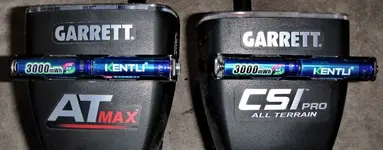Monte,
You certainly have made some good points about using alkalines. I don't agree with all of them, but it's your money and your devices and that's cool. I would like to mention a few things, though.
First, I think you would save money by switching over to rechargeables, at least in the long run. Granted, it might take a while (several years), but I think you use them enough that after a few dozen charge cycles, they will have paid for themselves. And yes, it might be a pretty expensive initial investment of several hundred dollars, but I don't think you would be losing money by switching over at least part of your AA battery supply to rechargeables.
Second, I'm still using my first generation Eneloops from circa 2005/2006 and they work just fine. I don't know how much their performance has suffered, but they're still providing performance that mirrors brand new Eneloops from what I can tell. I would estimate that I've put maybe a few dozen cycles through them, as they are usually relegated to lower used devices, like my graphic calculator or emergency flashlights.
Third, I think you make a great point about alkalines giving you some warning before they die. NiMH cells certainly do not provide the gradual decay in performance like alkalines do. However, you seem like a very organized and conscientious battery user, so one way around this would be automatically swapping out used rechargeables with fully charged ones. I'm not saying you should do this or you're lazy if you don't. I'm just stating it because it seems like you enjoy organizing and managing your batteries (as do I), so it seems like it would be an added task that you don't mind doing.
EDIT: I found some data from
https://eneloop101.com about how Eneloops can get thousands (tested up to 5,000) cycles of life. Direct source of test results are here:
http://www.ultrasmartcharger.com/phpBB3/viewtopic.php?f=5&t=91 A few caveats are that these aren't full charge/discharge cycles (but still enough to compare to actual use). Also, there were no rest periods between the cycles. But using a conservative number of say, 2,000 cycles - at 10 cents per alkaline cell, that means one Eneloop (which costs about $2-$3 per cell) is the equivalent of almost $200 worth of alkalines (I say almost, because it costs a few hundredths (or less) or a cent or so per charge per cell).






